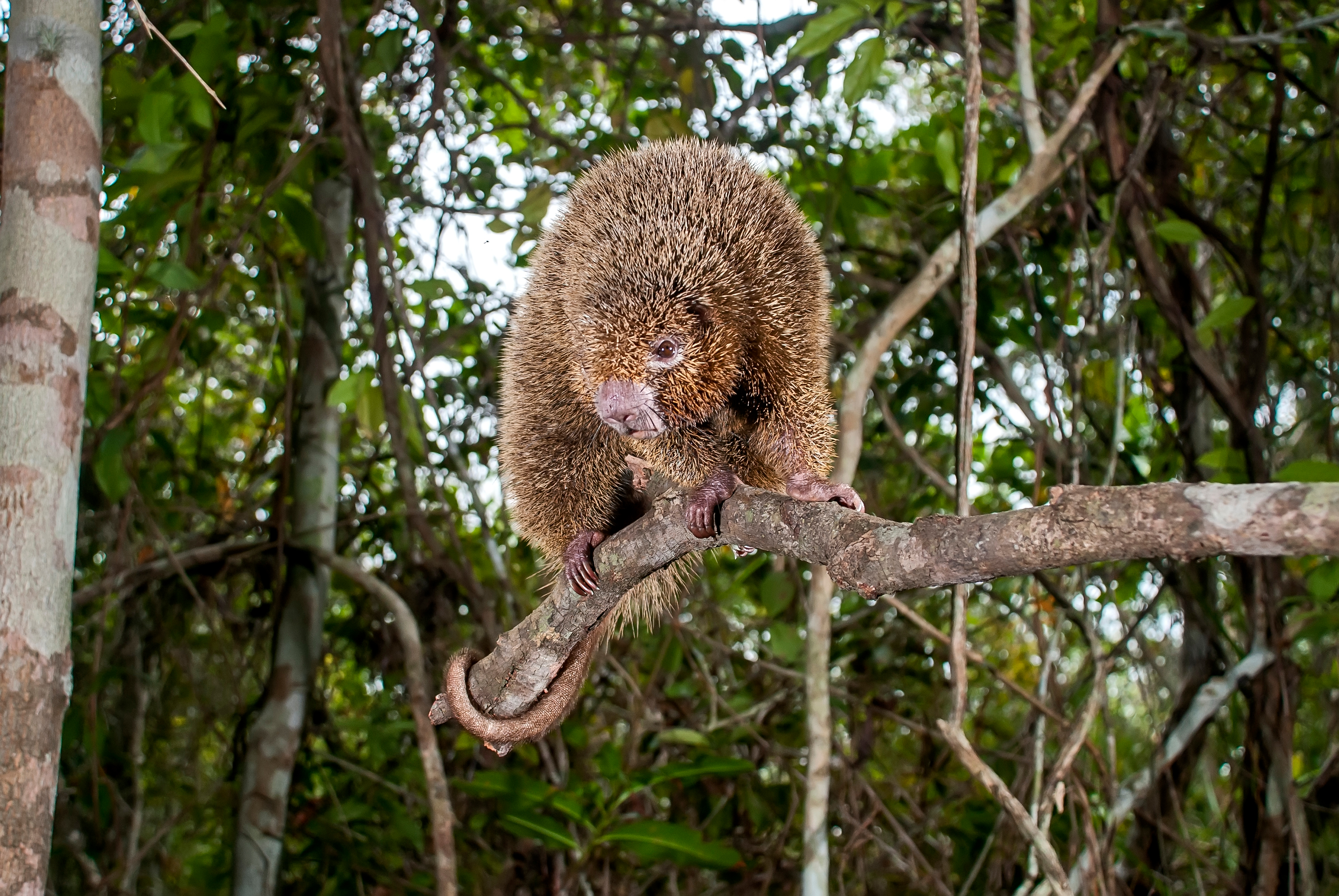You’ve heard of porcupines, you’ve heard of rats, but have you ever seen an animal that’s a confusing mixture of the two… and also looks like someone made it out of the same stuff as a stiff broom? No? Then it’s time to introduce you to the bristle-spined rat.
Bristle-spined rats: the basics
Also known as thin-spined porcupines, bristle-spined rats (Chaetomys subspinosus) are a species of nocturnal rodent that were first reported in the scientific literature back in 1818, the only species belonging to their genus.
Their defining characteristic is in the name – they’re covered in short, bristle-like spines that are usually brown, but occasionally grey. As for their size, bristle-spined rats are about the same length as a small cat, and weigh around 1.3 kilograms (2.9 pounds).
They’re found in the Brazilian Atlantic Forest, where they almost exclusively live up in the trees, chomping away at the leaves. Add to this their solitary nature, and bristle-spined rats can be pretty hard to spot.
That could go a long way to explaining why it was thought they might have gone extinct back in the 20th century; no sightings of the rodents were reported for over 30 years, until Brazilian biologist Ilmar B. Santos rediscovered them in a northern region of the forest in December 1986.
Classification controversy
As much as we humans like to categorize the world around us, it’s not always so easily done; despite having first been reported over 200 years ago, it’s only recently that the debate over how to classify the bristle-spined rat has been settled.
The question – is it a member of the scientific family Erethizontidae, better known as the New World porcupines, or is it in the Echimyidae, the spiny rats?

Is it a rat or is it a porcupine?
Image credit: Leonardo Mercon/Shutterstock.com
One of the ways that scientists can try to group animals together is by comparing their physical characteristics, but it turns out ol’ spiky is a bit of a mishmash of the two families. Its feet, nose, and tail look like those of erethizontids, but other structures like its teeth have been suggested as closer to that of Echimyidae.
After a lot of back and forth, with newer techniques like genetics providing evidence, the argument finally seems to have been resolved: the bristle-spined rat is an erethizontid (although a fresh debate quickly popped up in its place, as is the way of science).
But why get so caught up in the classification of it all?
Under threat
It might seem like pedantry, but debating the details of classification is actually pretty important – not just to get a better understanding of animals to satisfy scientific curiosity, but because of the real-world applications that has.
One of those applications is conservation, which is particularly relevant to the bristle-spined rat as it’s currently considered a vulnerable species on the IUCN Red List, with its population decreasing.
That’s largely been attributed to widespread deforestation in its habitat, although hunting of the rodents to use them as food or incorporating their spines in traditional medicine has also been identified as a major threat to the population.
To help conserve the bristle-spined rat, researchers have identified a need to not only add greater protections against hunting and habitat loss, but also to improve people’s awareness of these bizarre, yet charming animals and their importance to the ecosystem.
Source Link: Meet The Bristle-Spined Rat: A Bizarre-Looking Rodent That’s Long Baffled Scientists